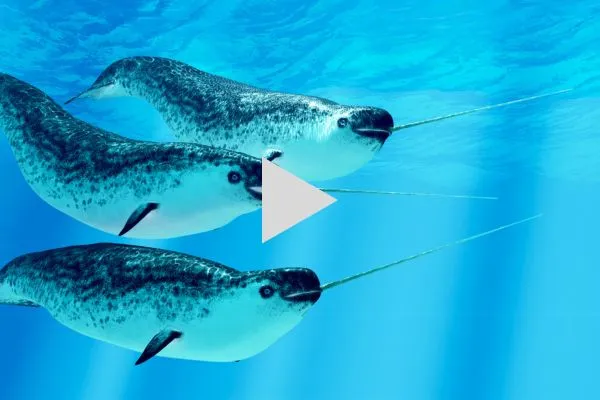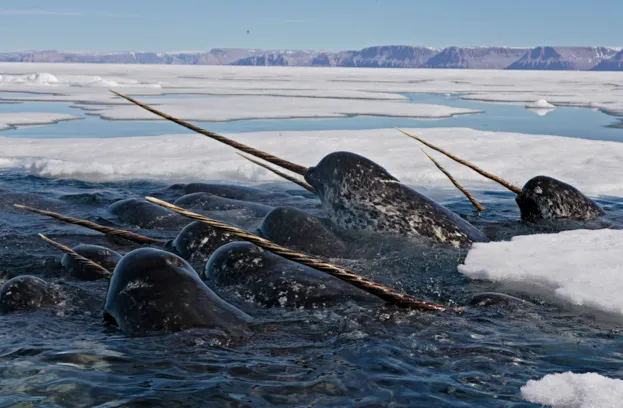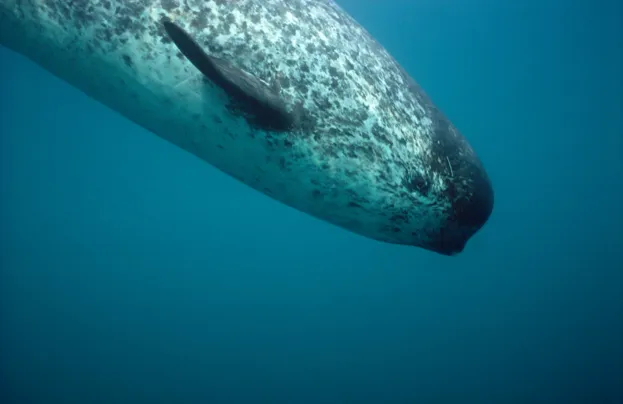A narwhal surfacing for breath in the Arctic © Paul Nicklen / National Geographic Stock / WWF-Canada
A documentary film-maker captured footage in Tremblay Sound, Canada, which shows a narwhal using quick taps to stun an Arctic cod.
This behaviour, which causes the cod to become immobile and thus easier to capture and eat, has not been seen before and provides insights into the mysterious narwhal.
Watch the video showing the behaviour:

Compared to other whales, the volume of research is significantly smaller as narwhals live in remote areas which are hard to access.
Male narwhals, and a small percentage of females, have a conspicuous single long tusk, a canine tooth, which can reach lengths of 1.5 to 3.1 meters. Until now the use of the tusk has been widely unknown.
Scientists know very little about the evolution of the narwhal tusk, adopting theories that consider more than one use, for example a weapon to win a mate and a tool for echolocation and even an ice pick.
More recent research that supports the drone footage suggests that the tusk has thousands of nerve endings, as well as pores that allow narwhals to sense the environment around them.

A pod of male narwhal surfacing for air through seal holes and rotten ice while searching for cod © Paul Nicklen / National Geographic Stock / WWF-Canada
“Narwhals are one of the most magical creatures on our planet,” said Rob Downie, WWF’s head of polar progammes. “So it’s no surprise that they have gained an almost mythical status as the ‘unicorns of the sea’”.
The footage is also significant as it shows that narwhals feed on their summering grounds, helping researchers to determine which areas are key narwhal habitat.
“With this information in hand, we can work to minimize the effects of human activities on narwhal,” said David Miller, president and CEO for WWF Canada.
“More research needs to be conducted to determine how they behave across their range, including the identification of calving and rearing areas.”

A female narwhal in the Canadian Arctic © naturepl.com / Doug Allan / WWF
Adam Ravetch was working with Fisheries and Oceans Canada at their research camp, which is supported by WWF Canada, the Vancouver Aquarium and the community of Pond Inlet.
Wildlife Q&A: How do whales breastfeed underwater?
Your 60 second guide to humpback whales
Read more news stories about whales: